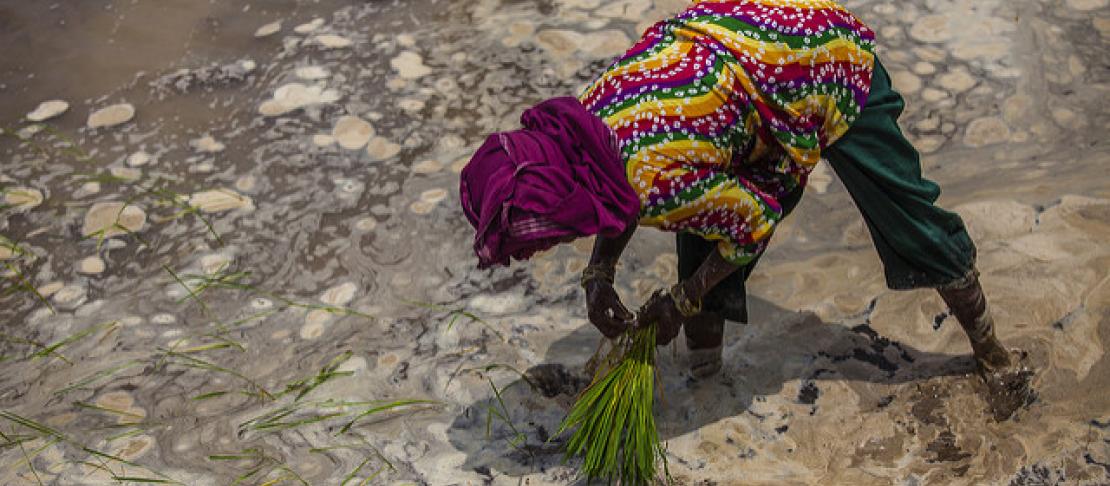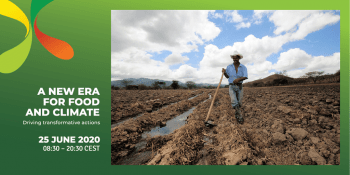A CCAFS-commissioned review examines a variety of screening tools available to aid in the climate risk assessment of agricultural investments.
Why think about climate risks?
While climate change is a global concern, climate change impacts can seriously threaten food security and livelihoods, as well as disrupt development progress, in the world’s most vulnerable places. Access to and availability of climate information had has greatly improved in recent years, allowing for better understanding of the past and present climate, and there has been improvement in weather forecasts and regional climate predictions for the region. This in turn can aid the decision-making process for agriculture, public health, disaster risk management, and more.
As billions of dollars are invested annually in agriculture and food security, in the great pool of investment risks, present and future climate risks cannot be ignored. Considering the climate factor in today’s plans and projects can increase the long-term success of development efforts as well as add value through other short-term benefits. National stakeholders in developing countries increasingly consider incorporating climate risk screening into the planning and prioritization of development strategies and activities.
The CGIAR Research Program on Climate Change, Agriculture and Food Security (CCAFS) Flagship on
Climate Services and Safety Nets supports expanding availability and effective use of relevant climate information by farmers and by the institutions that support them. The flagship's work aims to enable the transition to climate-smart agricultural systems and climate-resilient rural livelihoods in high-risk environments. A
selective review of major donors was commissioned to understand their various approaches to climate screening in the selection processes for agriculture and food security investments. This will help identify opportunities for CCAFS and other research entities to add value to these screening processes, and contribute to improving how agricultural investment funds are screened and used.
What resources are available for climate risk screening?
According to the commissioned review, a growing number of climate risk assessment tools and resources have been developed and applied in the field in recent years. Driven by international donor agencies and NGOs, they assist development practitioners in ensuring that climate considerations are integrated into project design, planning, and programming. Climate screening tools are generally well-developed and integrated in donor strategy and proposal development processes.
Tools such as the Swiss Agency for Development and Cooperation (
SDC) Climate, Environment and Disaster Risk Reduction Integration Guidance (
CEDRIG) Strategic and Operational tools, are designed to guide the thinking process, typically requiring users to use external climate data and other resources as inputs. Users are guided through a process that ultimately relies on a certain level of subjective assessment of the degree to which climate factors are relevant, as well as the action/approach to be taken. The tools also encourage and remind users to consider climate variability, gender, conflict, and further risk assessment—factors that may have been overlooked during the project evaluation process. One informant commented:
Often forgotten in the whole process is the fact that there are often existing environmental stewardship issues that have an important impact on the existing level of development or vulnerability. It makes little sense to address future climate vulnerability if you have not already addressed existing environmental stewardship issues.”
Additionally, each of the donor agencies reviewed have integrated their climate screening process into their institutional processes related to proposal development, review, and approval. However, the place of and approach to climate screening are not standardized. The agencies seem to continuously reflect on and redesign the screening processes in response to user experience.
Looking forward
While there are certainly many challenges to fully “proofing” a project from all climate risks, the available climate screening tools and resources allow funding agencies and development practitioners to recognize and plan for these risks. The climate screening tools and approaches reviewed encourage the use of climate information, but there is still little guidance on how to use and interpret climate information. Users often need to find and input the relevant data themselves, so the degree to which climate information is considered is up to the user and assessment of its relative importance is subjective. This indicates a need for good training and institutional checks and balances. An informant stated:
There is a need for more conceptual guidance to help people working with and following up on the screening tool. This would include guidance to help people understand why they do each step and also guidance regarding some of the principles involved in responding to the identified climate risks.”
Another shortcoming in the current climate screening processes is the assumption that climate adaptation will result in some trade-offs in achievement of development goals, and that supporting adaptation activities and achieving mitigation goals should be treated separately. In truth, development, adaptation, and mitigation strategies can be synergized to produce successes through an approach known as Climate Compatible Development. For example, in agriculture, climate-smart agriculture (CSA)—an approach that encourages the identification of synergies between adaptation, mitigation, and food security goals—has the potential to help guide decisions about priorities and actions.
Further development of guidance resources related to agriculture, especially on the use of climate information and on working with farmers in the context of climate uncertainty, can add value to the donors’ existing tools and development of new resources. Overcoming the existing gaps in the guidance materials and information resources to assess the climate risks of agricultural investment projects will help ensure the long-term viability of these investments, as well as food security.
Read More:
Working paper: Review of climate screening approaches and tools for agricultural investment: Areas for action and opportunities to add value
Research area: Climate services investment planning and policy
Dannie Dinh is the Communications Officer for the CCAFS Flagship on Climate Services and Safety Nets, based at the International Research Institute for Climate and Society (IRI).
Douglas R. Brown is a consultant and director of Foundations of Stewardship Consulting based in Prince Edward Island, Canada.




